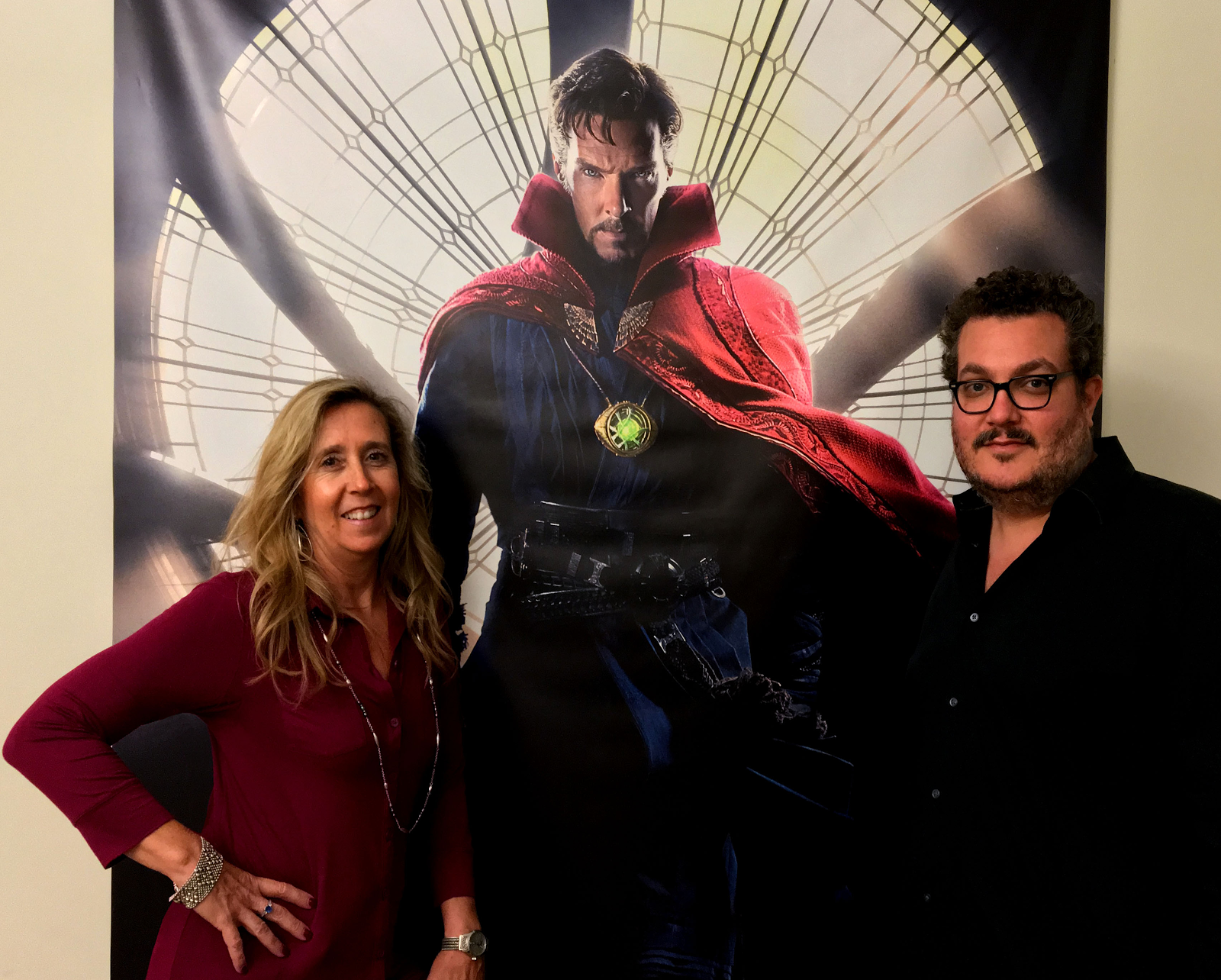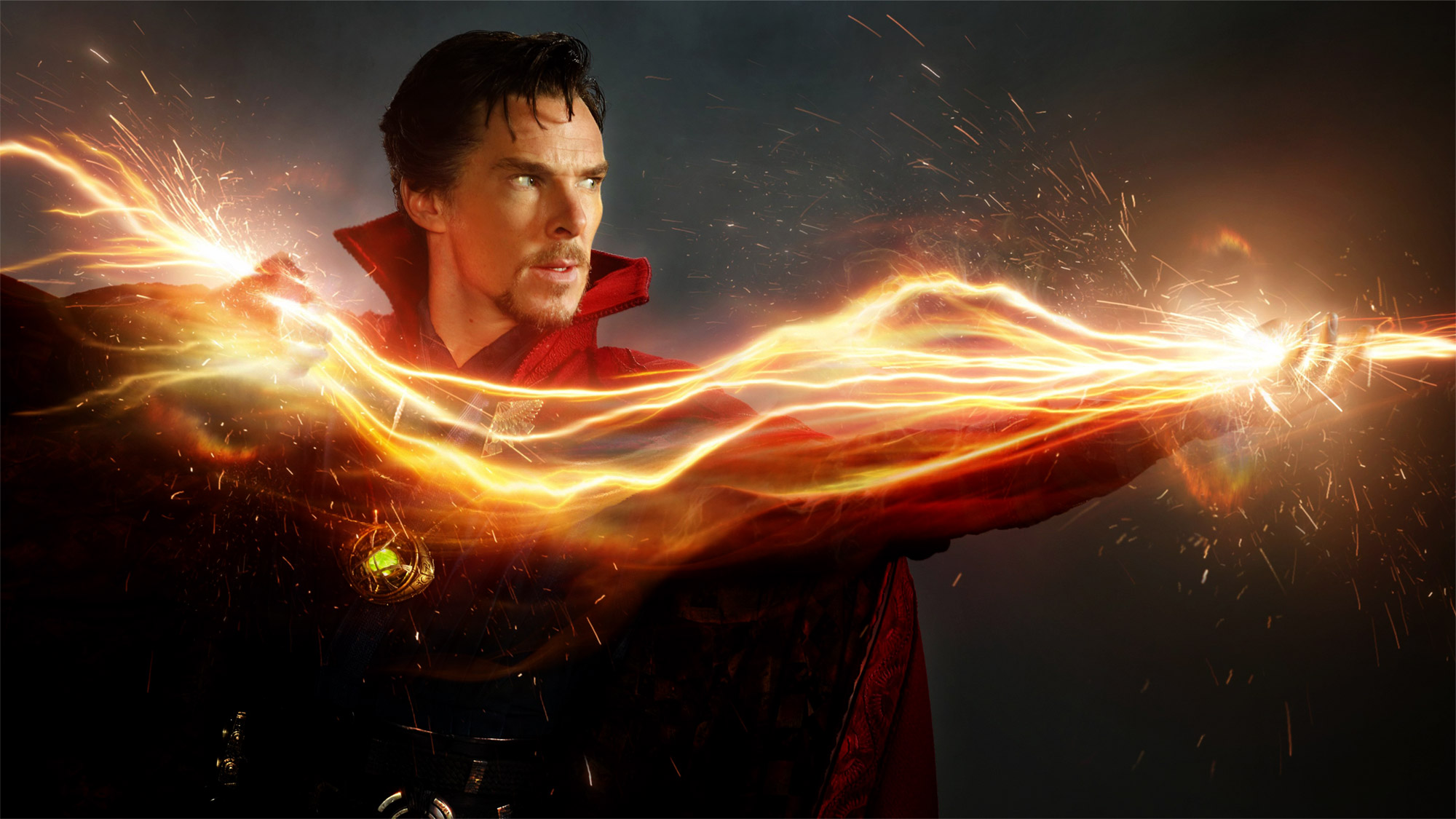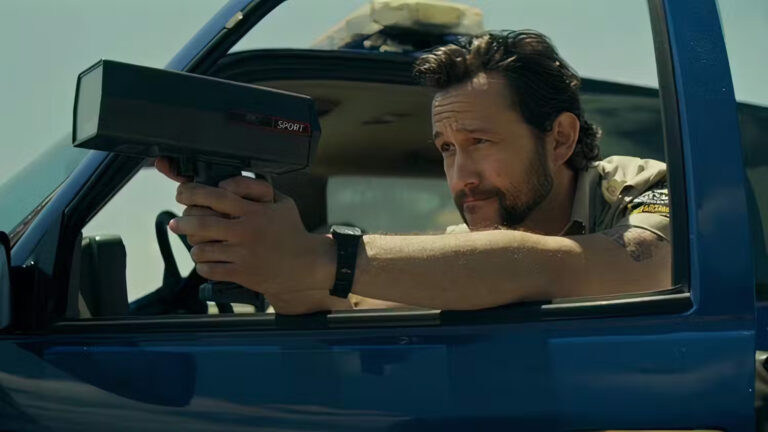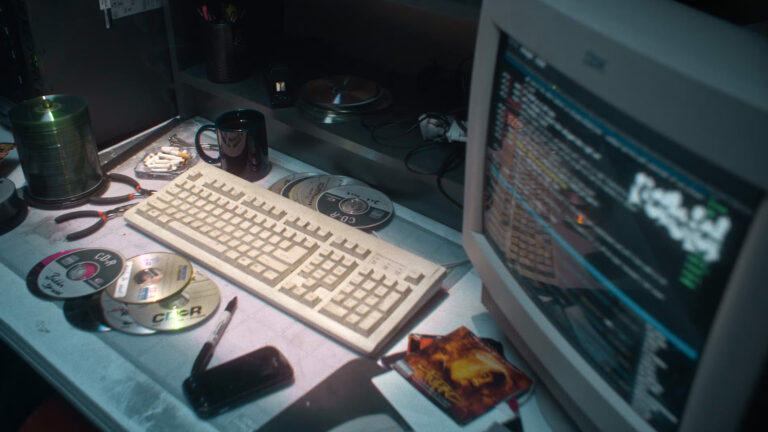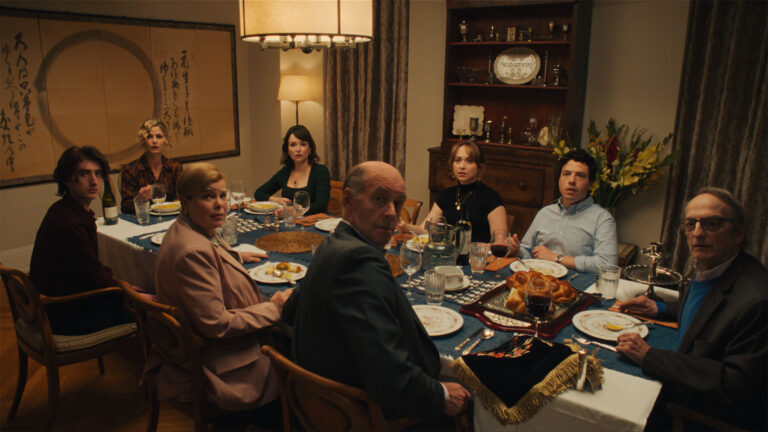Sabrina Plisco has a wealth of experience as a co-editor, from her work on major films like Doctor Strange, Charlotte’s Web, and the History miniseries Houdini, for which she received an Emmy nomination. These days, “the bigger tentpole action movies have multiple editors most of the time,” Sabrina says. “Just because of the demanding workload and schedule on these big movies.”
While hiring co-editors is becoming more common in major-studio productions, Sabrina says there still aren’t any overarching guidelines for working alongside another editor.
“There is no rule about how co-editing works. Every team sets it up differently.”
Sabrina’s Hollywood editing career began in the late 1980s, and she’s worked in just about every imaginable editing environment. When co-editing is done right, Sabrina says it can be extremely rewarding. “I have been a part of a couple really wonderful partnerships,” she says. “That’s the optimum place to be.”
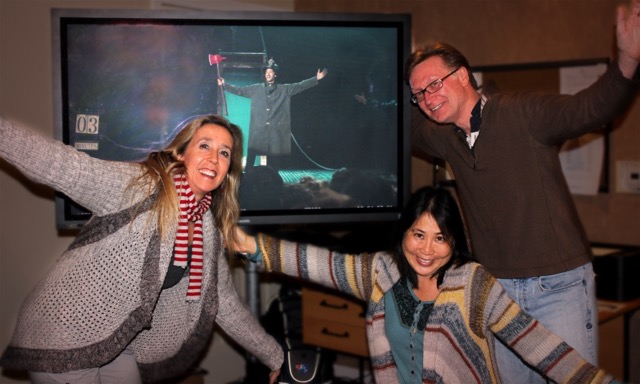
Unfortunately, that lack of rules Sabrina talks about can lead to disagreements, and even antagonism in the editing suite. With all of her experience in this environment, Sabrina has a wealth of great advice on forging team dynamics when co-editing.
If you’ve had difficulty navigating a tricky collaborative editing situation, or if you’re just looking to grow as a collaborator, Sabrina has some helpful tips for co-editing cohesion.
Fostering a collaborative environment
Sabrina cites her work with Wyatt Smith on Doctor Strange as an example of an ideal co-editing experience. Because co-editing doesn’t come with a set of accepted guidelines, developing mutual respect between editors is indispensible – especially when they join the project at different times, in different roles.
“A commonplace practice these days on bigger movies is that you don’t start with two editors -the budgets don’t allow it,” Sabrina says. “Wyatt was smart enough and forceful enough to where he could say, ‘I think on this particular project, we need to both start at the beginning of production.’”
With both editors working together from the start of the production phase, they struck a perfect balance of working separately and cooperatively. “We just started from day one, talking about how we were going to work, splitting things up,” Sabrina says. That brings up the first lesson: map out the process early on and discuss how you can create an encouraging and supportive co-editing environment. If you just let norms develop unconsciously, you can miss a lot of the potential benefits of co-editing. “There were a few scenes we each took on – just because it worked out that way – but each night, we sat in the cutting room and reviewed each other’s work during dailies. We just talked and brainstormed, which was awesome.”
The biggest advantage of co-editing is having another experienced editor in the room with you, sharing techniques and filtering each other’s ideas. Too often these days, “the assistants are in their own room,” Sabrina says. “They don’t get to sit and be with the editor very much.” Even when the editor and assistant do share a room, the hierarchy of roles can often put a damper on the exchange of ideas — an issue which is far less prominent when co-editing as a team of equals.
Equally vital to Sabrina and Smith’s success as co-editors on Doctor Strange was the freedom granted them by director Scott Derrickson. “Scott gave Wyatt and I a lot of freedom to play, experiment, restructure and try things.” Sabrina says. “By the end of the shoot, we already had a pretty great, polished cut. We were in a really good place to begin post.” If she didn’t have such smooth working relationships with both her co-editor and her director, there’s no way this shoot would go down so smoothly for Sabrina – and it probably won’t work that way for you either.
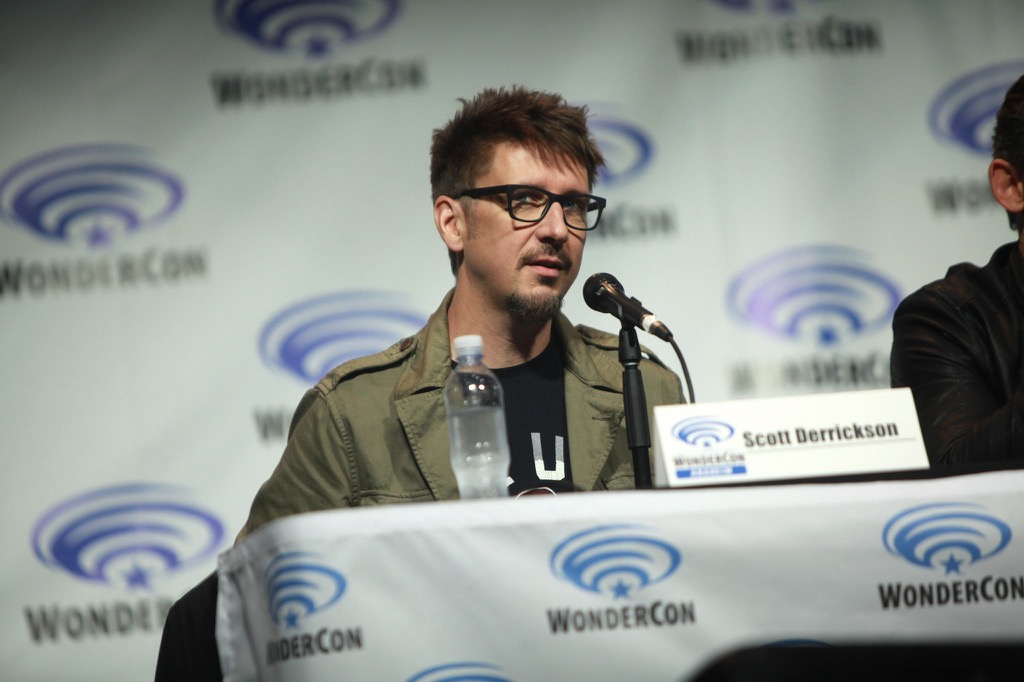
For Sabrina, any relationship between editors comes down to one basic ideal: open communication. “We’re there to support each other, and help each other,” she says. “Ultimately, we all want to tell the best story possible. Be positive and not arrogant. Be open to criticism. That’s the hard thing for a lot of people.”
Maximizing productivity by minimizing your ego
Co-editing is rarely a 50/50 endeavor. Knowing your role and how you fit into the editing process is a crucial step to take in any situation with multiple editors. “You have to consider what role you’re being brought in on,” Sabrina says. “Are you the lead? Are you the support person? Is it equal? Be willing to bend. I think that people who have the hardest time are the people that aren’t willing to bend.”
On Doctor Strange, Smith started work a month before production started. “I was brought in really to support Wyatt, even though it was supposedly an equal team,” she says. “He was the lead editor.” Being able to set your ego aside is as crucial a skill as you can have, if you hope to form a positive relationship with your co-editor, like Sabrina and Wyatt did on Doctor Strange.
Additionally, each editor needs to know how to play to his or her strengths. Sabrina recalls her experience as a co-editor on the film Charlotte’s Web: “I was brought in from the producer, because I had the VFX experience,” Sabrina says. “My co-editor didn’t really have any interest in doing that part of it. It turned out to be a very fun, collaborative, positive editing experience all around, but I for the most part handled the visual effects responsibilities for the editing team.
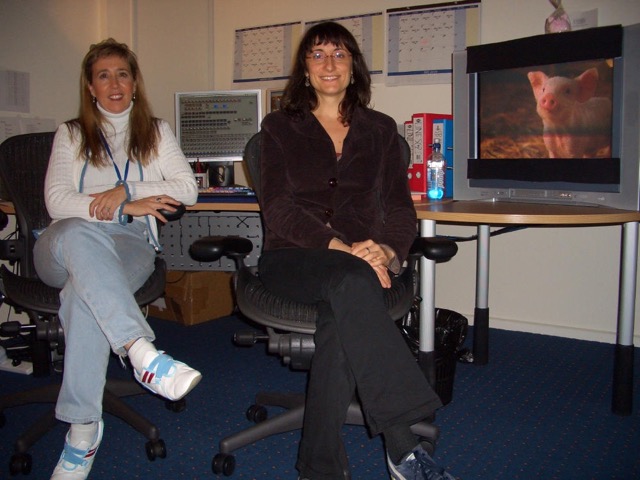
Even when your role is relatively narrow in scope, do everything you can to work in tandem with your co-editor, instead of just being two separate editors assigned to the same project. If you come to a project with the attitude of “I’ll take the first act, and you’ll take the second”, you can lose all of the creative benefits of co-editing. This of course is subject to the wishes of the director and producers because they may have a specific plan in mind for how they want the work to be delineated.
Common co-editing mistakes to avoid
“With two editors, you have to be careful not to gang up on your director,” Sabrina says with a laugh. Jokes aside, she sees many similarities between the way you should handle your relationships with both your co-editor and your director. “I don’t think that being adversarial ever works for anybody, as far as I know. With two editors, it’s the same. If we don’t agree sometimes, it becomes the director’s decision. You have to learn to let things go.”
If your vision doesn’t mesh with that of your director or co-editor, it’s important to learn how to assert yourself without dismissing others’ ideas. “If they’re really stuck on wanting to see something their way, of course I’m going to do it, because I always learn something doing their version as well,” Sabrina says. “But then, I do not hesitate to try another option if I have an idea. They can throw it out. That’s perfectly fine. But at least in your own heart, you’ve explored your option, and your effort to have it on record.”
Remember that you were brought on because your work is respected, and so the rest of team wants to hear your ideas. But know when to set your personal thoughts aside, for the greater good of completing the project on time. With today’s technology, the creative process can (and should) explore multiple possibilities when there are multiple opinions, and as Sabrina points out, every disagreement is an opportunity to learn.
You also need to be humble, and only expect credit when you deserve it. “I don’t like it when we’re not supportive of our comrades,” Sabrina says. “I’ve been in situations where someone’s come in, and they said, ‘I’m just here to help, and I don’t want any credit.’ I really appreciate the morality of that, because I’ve also been in the position where somebody’s come in after I’ve been on a show for 14 months, and they insist on a credit.”
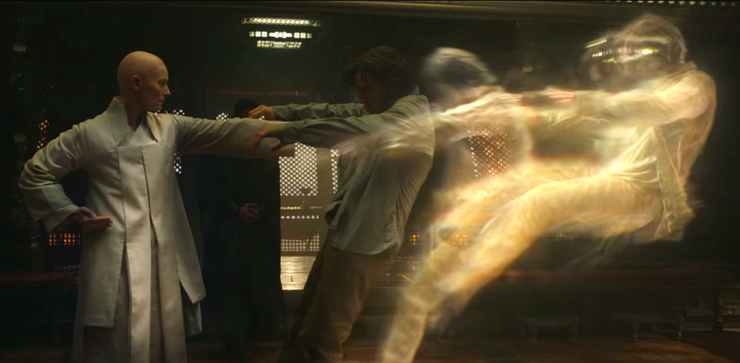
In other words, don’t engage in petty politics, when your efforts would be better served helping put the best possible version of the director’s vision on the screen. A reputation as a great person to work with can serve you well for the rest of your career and help you much more than one credit.
Co-editing versus solo editing
Sabrina says that she enjoys both co-editing and editing alone. If possible, it’s good to get experience in both realms, because skills learned in each setting are applicable to the other. “The biggest benefit of co-editing is just to work with someone else and bounce ideas off of them,” Sabrina says. “It opens your mind to things earlier in the process, when maybe you would’ve thought otherwise.” Your skillset as an editor should always be evolving, and a co-editing situation can be particularly valuable early in your career when you still have a lot to learn. It places you in an environment that’s more directly collaborative and instructive than any other situation.
“Of course, it’s easier to manage when you’re on your own, especially if you’re used to being on your own,” Sabrina says. “I’ve been doing this a long time now, so I’m definitely used to running the show, and I like that.”
Even though she prefers many aspects of solo editing, Sabrina acknowledges that co-editing has benefits that you’ll never get working alone. “Whether I specialize in one area or not, we still talk about everything throughout the process,” she says. “That’s where it works really well.” Ideal co-editing environments – like the one Sabrina and Smith enjoyed on Doctor Strange – don’t come along every day, but the process doesn’t need to be perfect to be productive. And, who knows:
“If it works out positively, you make great friends for life.”
